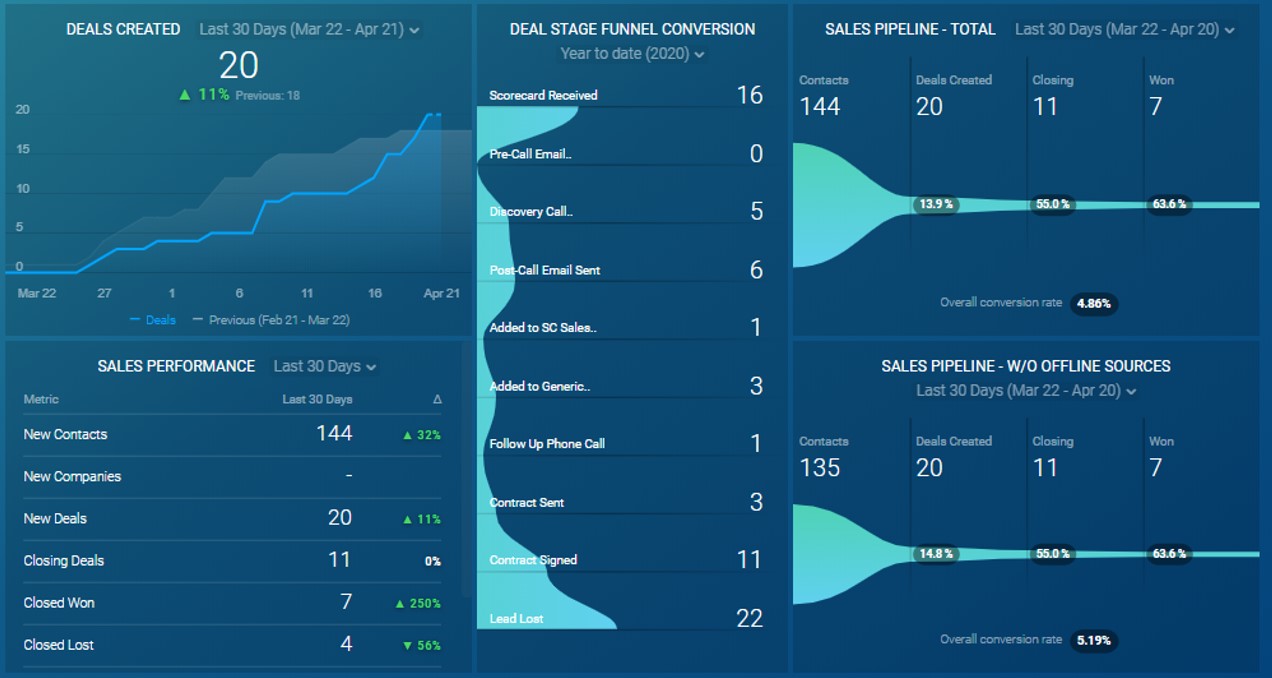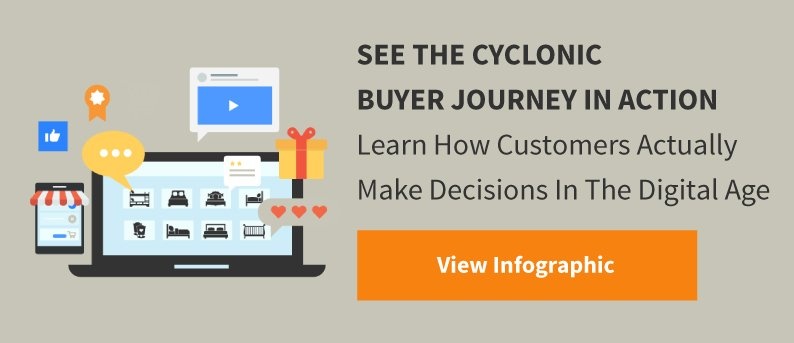
Marketing And Sales Need To Create Trust When You Can’t Meet In Person
What Worked Last Month Won’t Work This Month, Next Month Or Next Year; It’s Time To Get Serious About Revenue
 We’ve heard it many, many times: Our prospects are different. We need to meet them in person. Our business is a relationship business.
We’ve heard it many, many times: Our prospects are different. We need to meet them in person. Our business is a relationship business.
Guess what? Everyone’s business is a relationship business, and now no one can meet in person.
What are you going to do? Give up? Throw in the towel? Close up shop?
Of course you’re not. Just like millions of other businesses, you’re going to figure out how to market and sell to people who you can only meet on Zoom. You’re going to figure out how to market and sell to people who might be distracted. You’re going to figure out how to market and sell without trade shows and travel.
And we’re here to help.
Please Think Before You Act
You can’t just tell your sales reps to use Zoom. You can’t just expect people who used to travel to meet prospects in person to instantly adjust to their new normal without thoughtful guidance, new tools, a new process and new expectations.
What about the people who you used to have making 1,000 calls a week to offices all over the world? Who are they calling today?
I keep getting transcripts of voicemails reps are leaving at my vacant office. Who do they expect to be there? It’s a total waste of time. But someone told them to keep doing it, or worse, no one told them to stop.
Come on folks, you can do so much better.
But doing better requires thought, planning, ideas, perhaps a new playbook around execution and maybe even different tools, like your CRM. Small changes aren’t likely to be enough. Today you’ll need to rethink all aspects of how you engage prospects.
Construct A New Buyer Journey Model
The first step is to reimagine your prospects’ buyer journey as it exists today and how it will exist in 60 days — not how it used to exist.
How are people finding products and services like yours? Where are they going for information on products and services like yours? What questions are they asking as they look for products and services like yours?
With trade shows, conferences, events, networking and travel all in the scrap heap for the foreseeable future, I’d bet the answers to those questions are different than they were a few weeks ago.
Looking for a place to start? Consider our Cyclonic Buyer Journey™. It has eight stages and will help you focus your attention on each of those stages.
Don’t phone this in. Create a physical map of every single touch point for prospects.
Start with the very first time they hear about your business (regardless of where that is) and continue on to the time they first visit your website. Then look at how they interact with your website and when they turn from a prospect to a sales lead. Finally, focus on every single touch point that a rep would execute and all of the surrounding nurturing that goes on.
You want to identify every single touch point no matter how small, right up to and even after they sign your paperwork.
What happens after they sign is equally important and might have to change too, but since this is about marketing and sales, we’ll leave the customer journey for another article on another day.
Now that you have a map of the buyer journey, you can go back through it and make sure you have the right content in the right format to help your prospects navigate that journey quickly and efficiently.
Some of this content will be self-service on your website, other content will be emailed by the marketing team and even more content will be distributed based on context by the sales team.
Revise Your Sales Process
You have a documented visual sales process, right? Your documented visual sales process is also translated into your CRM, right? Everyone on your sales team follows the documented visual sales process, right? You’re analyzing that sales process to see where you might need upgrades or adjustments, right?
If you answered no to even one of these questions, you have sales process needs that should be addressed immediately.
Even if you answered yes to all of these questions, you need to go back and look at the process again, in light of the changes to the way people buy today.
At Square 2, we used to send a book to all of our qualified sales prospects. We’ve had to adjust to using Sendoso to send those out. That altered our sales process.
We used to visit local prospects to present our final recommendations. We did this remotely via Zoom for out-of-the-region prospects, so this wasn’t a huge shift, but it was a change nonetheless.
Go back through your sales process and make adjustments based on the current restrictions associated with travel and business lockdowns.
Make these changes to your visual sales process map and be sure everyone knows what the changes mean. Then make sure everyone is following the changes to your process by documenting them in your CRM and using your CRM to control the process across all reps.
You might be having challenges closing deals because, let’s face it, everyone is moving more cautiously. What can you do to move those people forward? Deferred payment terms? Incentives to move forward immediately? Preferences on service or product configuration? With people out of the office, have you moved from pay by check to pay by ACH? Do customers get a discount when they pay by ACH?
These changes need to be documented, and reps need to be communicated with regularly. By looking at your sales process monthly and by making even small iterations to your sales process, you’ll see measured improvements in close rate and in shorter sales cycles.
This is something sales operations does regularly, and it is something your company needs to do regularly, too.
Lean Into Safe And Remarkable
As you’re going through the exercises above, consider these two statements:
Statement 1: No one buys anything until they feel safe.
How effective is your sales process at getting prospects to feel safe?
Statement 2: By the time your sales process is finished, your prospects should be saying, “We have to hire this company!”
If your sales process is not producing the feeling of safe and the extreme enthusiasm captured in the second statement, you have more work to do.
These are the two guiding principles that you should be using as you rearchitect your sales process and as you train your sales reps around the new normal. When you can’t buy someone a drink, dinner or tickets to the big game, you have to lean into sales process and proven sales techniques.
Finally, Put In The Tracking And Analytics You Need
If you can no longer travel and go out to lunch, and if golf, ball games and drinks are off the table, your sales team is going to have to lean into new plays. Salespeople won’t be able to say, “We’re going to have drinks; I’ll close the deal then.”
Every touch, every interaction, every conversation and every subtle intonation is going to be trackable, and you should want to track it.
Let’s illustrate this a bit.
When you hand reps 10 marketing-qualified leads that are qualified based on a marketing and sales agreed-on set of criteria, you should expect those reps to move at least seven into sales-qualified leads.
You should then expect to see at least five move to sales opportunity. That means there is an active opportunity with acute pain talking to power, and the fit is solid between the two companies. All five should likely get proposals, and you should close at least four of those.
Anything less than these performance benchmarks across your sales team signals departmental issues and challenges that need attention. Any rep that can’t deliver these conversion metrics signals individual issues and challenges that need attention.
But we can go a level deeper. Emails that reps send can be tracked and the performance of those emails measured. Videos that reps create can be tracked and the performance of those videos measured.
Tools, like checklists and tip guides or RFP templates that reps use, can be tracked and the performance of those tools measured. Marketing-created video assets, like case studies and reference reels, can and should be tracked and measured.
Sales is quickly becoming a science. Don’t let any reps tell you differently. With science comes data. Data informs insights, and insights drive additional performance improvements. Over time your sales process and sales execution should get better and better.
Here is an example of an actual sales performance dashboard created for a client (client data scrubbed for illustrative purposes only).

Custom dashboards drive incredible insight into how the overall sales process, the sales team and individual salespeople are doing.
It’s a game-changer, and you need to be considering adding this to your playbook immediately.
Today’s situation calls for radical adjustments. Business will never be the same. Don’t pine for it to return to the good old days. Instead, get ready for what’s coming.
Consider the savings from travel related to sending sales reps to trade shows. Consider the savings from reduced T&E expenses. Consider the acceleration you could provide to your sales cycle if you just focus on making it measurable, remarkable and designed around your prospects.

CEO and Chief Revenue Scientist
Mike Lieberman, CEO and Chief Revenue Scientist
Eliminate Hit-or-Miss Marketing Moves
Get advice, tips, tools and guidance to generate more leads for your company in this weekly email newsletter.



Eliminate Hit-or-Miss Marketing Moves
Get advice, tips, tools and guidance to generate more leads for your company in this weekly email newsletter.














